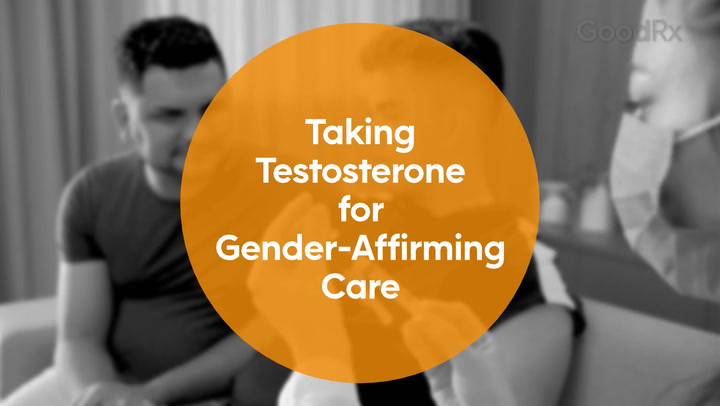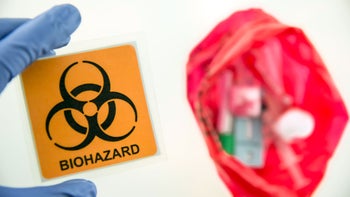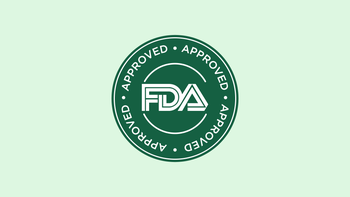
Are Testosterone Pills Right for You? 7 Things to Consider
Key takeaways:
Testosterone undecanoate (Jatenzo, Kyzatrex, Tlando) is a prescription-only medication used to treat low levels of testosterone, the main sex hormone in males. It’s available as an oral pill.
It’s normal for testosterone levels to dip with age. But this can also happen because of issues with the testicles or brain. Low testosterone may cause problems such as changes in muscle mass, libido, or fertility.
Testosterone replacement therapy can help restore your testosterone levels, but it comes with some risks. Talk with your healthcare professional before starting a testosterone replacement routine.
Access savings on related medications
Table of contents

Testosterone is an important androgen, or male sex hormone. It impacts many aspects of health, such as fertility, muscle mass, and libido.
As people grow older, testosterone levels naturally decline. This is a normal part of life, and swapping out testosterone for wisdom isn’t necessarily a bad thing. However, sometimes, testosterone levels can fall for reasons that are unrelated to age. And this can impact how a person feels on a daily basis.
A testosterone replacement pill may be the right solution in these cases. But testosterone pills come with some risks. Coming up is a deep dive into testosterone pills, with seven things to consider before trying testosterone replacement therapy.
Prescription Savings Are Just the Beginning
See what other benefits you qualify for—from cashback cards to cheaper insurance.

1. There are three FDA-approved testosterone pills
Testosterone undecanoate (Jatenzo, Kyzatrex, Tlando) is a testosterone replacement pill. The medication was first approved in the 1950s. And it’s now produced by multiple manufacturers. All versions of this testosterone pill are usually taken twice a day with food, though there are some differences between brands.
Jatenzo is an oral (taken by mouth) capsule that comes in three doses: 159 mg, 198 mg, and 237 mg. Kyzatrex is also a capsule that comes in a trio of doses: 100 mg, 150 mg, and 200 mg. Tlando is only available as a 112.5 mg capsule.
Is your testosterone low? Learn how to spot common symptoms of “low T.”
Beyond the pills: In addition to the pills, there are several other testosterone replacement options for you to consider. Here’s how to weigh your options.
Not all the options are safe. SARMs are unapproved workout supplements that mimic androgens like testosterone. Here’s why you should generally avoid them.
2. Want to start taking oral testosterone? Only certain people qualify for treatment
Testosterone pills are approved to treat two forms of low testosterone: primary hypogonadism and hypogonadotropic hypogonadism.
Primary hypogonadism is when the testicles themselves don’t produce enough testosterone. Many situations can contribute to this, including:
Testicular torsion, or twisting of the testicles
Chemotherapy side effects
Lack of testicles
Undescended testicles
Hypogonadotropic hypogonadism occurs when there’s a problem with the area of the brain that signals testosterone production. This can happen because of genetic reasons that are present at birth. Or it can result from issues that occur later in life. Pituitary tumors, high prolactin levels, and brain damage, among other possibilities, are common examples. It can also be a side effect of long-term use of medications such as opioids or corticosteroids.
Good to know: Testosterone pills aren’t typically prescribed for gender-affirming hormone therapy (GAHT). Testosterone injections and testosterone gel are the two main methods used for GAHT. Testosterone pills aren’t typically prescribed to treat age-related testosterone deficiencies, either.
3. Unapproved testosterone supplements can be risky
Testosterone supplements are nonprescription products that claim to boost testosterone levels. These “T boosters” — or testosterone boosters — are appealing to many because they are marketed as a way to raise testosterone levels without a prescription. But these supplements are unregulated and often untested. This is also true for selective androgen receptor modulators (SARMs).
One study found that over 60% of T-booster supplements didn’t have available data about their effects on people. What’s more, less than 25% of the T boosters studied had data showing a meaningful impact on testosterone. In fact, 10% of the T boosters studied included ingredients thought to lower testosterone.
Even more concerning is that some supplements contained high amounts of vitamins and minerals that are considered unsafe to take regularly in large doses. This included large amounts of zinc, magnesium, and vitamin B.
4. Getting a valid prescription for testosterone helps keep you safe
If you think you might have low testosterone, the best place to start is a conversation with a healthcare professional. Your general practitioner or a specialist, like an endocrinologist, can evaluate your needs, order appropriate tests, and provide you with a valid prescription if appropriate. This is an important step because quality testosterone is only available via prescription. They can also refer you to a reputable pharmacy that keeps testosterone in stock.
Just keep in mind: Even if a healthcare professional determines testosterone pills are right for you, they still come with some risk and side effects.
5. Taking testosterone can cause side effects
Testosterone is linked to a number of side effects. Common oral testosterone side effects include:
Increased hematocrit, or a high number of red blood cells
High blood pressure
Lower levels of high-density lipoprotein (HDL), or “good,” cholesterol
Headache
Nausea
Acne
Enlarged prostate
Worsened sleep apnea
Mood changes
Sexual changes
Enlargement of breast tissue (gynecomastia)
Testosterone replacement therapy comes with more significant health risks as well. It can raise your risk for heart attacks, strokes, and blood clots in your arms or legs. These heart-related conditions are medical emergencies that warrant a 911 call or a trip to the ER.
There are other risks to keep in mind, too. Testosterone is sometimes used inappropriately by athletes and bodybuilders to improve performance or appearance. Taking testosterone outside of how it’s prescribed raises the risk for dependence and other serious side effects. Testosterone is a controlled substance because of this risk.
While you’re taking testosterone pills, you should receive routine tests to proactively monitor your health. And if you notice any new or bothersome side effects, be sure to discuss them with your prescriber.
6. Testosterone is different than methyltestosterone
Although they’re sometimes used similarly, methyltestosterone (Android 25, Methitest) and testosterone are different medications. Methyltestosterone is a lab-made cousin of testosterone. It can be used for testosterone replacement in men, as well as advanced breast cancer in women.
Like testosterone, methyltestosterone comes as a pill. But methyltestosterone isn't prescribed often because it can cause serious side effects — notably, liver injury.
7. Your prescriber can help you decide on the best way to receive testosterone replacement therapy
Before starting testosterone replacement therapy, your healthcare professional may encourage you to try other ways to naturally increase your testosterone levels. These options can increase testosterone without the risks of hormone replacement. They can also positively contribute to your health more broadly, too. Top recommendations include:
Achieving and maintaining your target body weight
Eating a healthy diet and getting regular exercise
Taking steps to prevent or improve diabetes
Minimizing excessive alcohol consumption
Minimizing the use of opioid medications
Avoiding xenobiotics
Measures like these aren’t always enough, though. If blood tests show that your morning testosterone is below 300 ng/dL, testosterone replacement therapy may be a good option. And you’ll have several options to choose from. Other than pills, testosterone comes as:
Injections
Patches
Implanted pellets
Skin gels
Nasal gels
The bottom line
Testosterone undecanoate (Jatenzo, Kyzatrex, Tlando) is a prescription-only testosterone pill. Testosterone is an important hormone that plays a role in developing and maintaining male sex characteristics. Testosterone replacement therapy can help restore testosterone levels, but it comes with some potentially serious side effects and risks, including heart problems. Your healthcare professional can tell you if testosterone replacement therapy is an option for you.
Why trust our experts?



References
American Association of Clinical Endocrinology. (n.d). What is an endocrinologist?
American Red Cross. (n.d.). What does hematocrit mean?
Balasubramanian, A., et al. (2019). Testosterone imposters: An analysis of popular online testosterone boosting supplements. The Journal of Sexual Medicine.
Bassil, N., et al. (2009). The benefits and risks of testosterone replacement therapy: A review. Therapeutics and Clinical Risk Management.
Clemesha, C. G., et al. (2020). ’Testosterone boosting’ supplements composition and claims are not supported by the academic literature. The World Journal of Men's Health.
Dandona, P., et al. (2010). A practical guide to male hypogonadism in the primary care setting. International Journal of Clinical Practice.
Handelsman, D. J. (2020). Androgen physiology, pharmacology, use and misuse. Endotext.
Marium Pharmaceuticals. (2022). Kyzatrex - (testosterone undecanoate) capsules, for oral use [package insert].
MedlinePlus. (2023). Hypogonadotropic hypogonadism.
Mulhall J. P., et al. (2022). Evaluation and management of testosterone deficiency: AUA guideline. The Journal of Urology.
Patterson, A. D., et al. (2010). Xenobiotic metabolism – A view through the metabolometer. Chemical Research in Toxicology.
ScienceDirect. (n.d.). Methyltestosterone.
Tolmar, Inc. (2023). Jatenzo - (testosterone undecanoate) capsules, for oral use [package insert].
U.S. Department of Veteran Affairs. (2024). Improving low testosterone naturally.
Was this page helpful?
Related Articles
Browse medications
View AllResearch prescriptions and over-the-counter medications from A to Z, compare drug prices, and start saving.




















